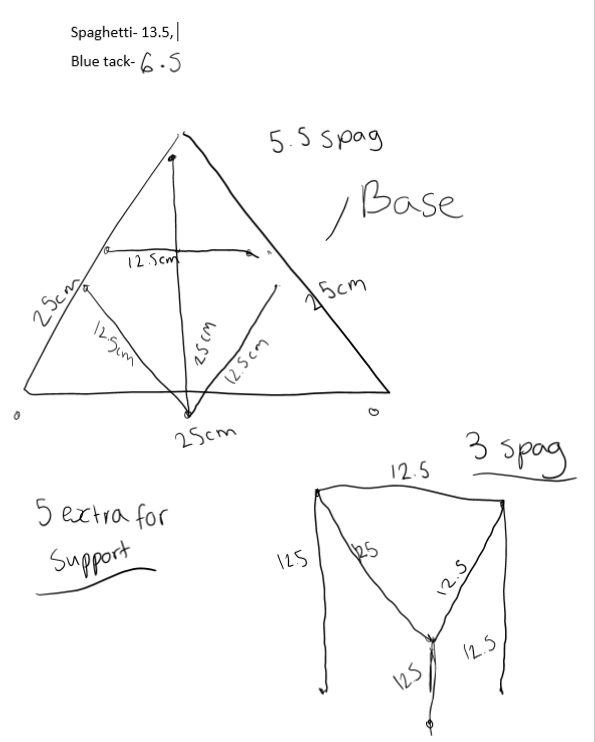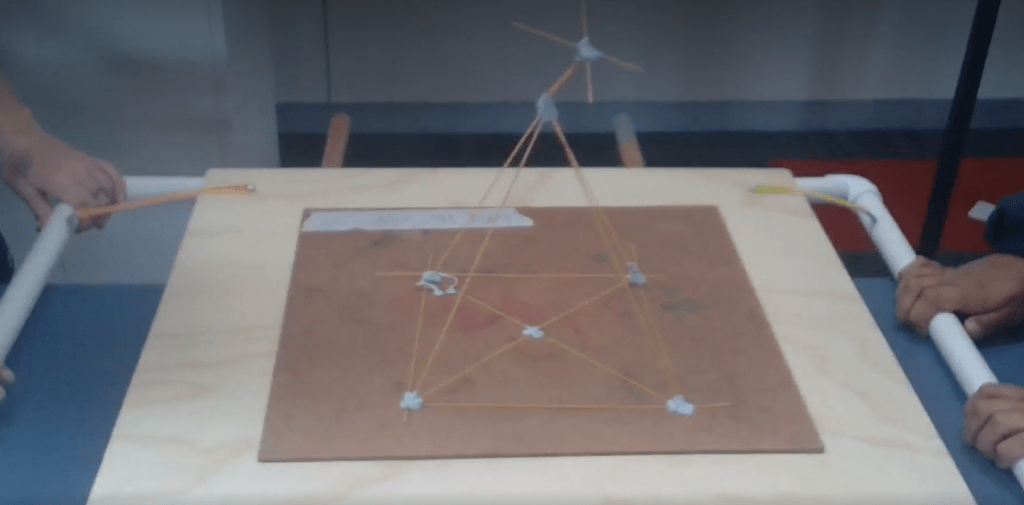This term, I along with my group members Isabel and jazz were challenged to build a spaghetti structure designed to withstand an earthquake. We were given spaghetti and blue-tack as our materials only a $60 budget.
To have a successful construction, you must include a variety of earthquake-resistant characteristics to reduce the amount of damage done to the structure. When considering which design would be best, we had to consider swaying and uneven movements. We then must make sure we spent our money wisely on the correct resources.

Our first few designs struggled to meet the requirements for our structure. We had not reached the height limit or size limit and lots of our spaghetti sticks kept breaking causing a lot of disruption and failure. We made sure to keep trying until our structure met the correct requirements and finally settled on a solid stable design that was worthwhile. We were then asked to place a lego man on the top platform on our structure while it was shaken by the earthquake for 10 seconds. The aim was to keep the lego man from falling off during the earthquake.

The implemented design changes made our structure easier to build and more effective against earthquakes. We measured the spaghetti sticks to make sure they all fit the design that we were hoping for. we first built the base and made sure to put a bit more blue tack on the corners for extra support. we then decided to put a cross-section through the middle to hold our structure and centre of gravity from the middle. We built a pyramid structure up instead of a cube because the pyramid was more effective for the height requirement. We were required to have a base or platform at the top. We were really happy with our top platform as it was not too wide or big to make our structure unstable and was the right size for our lego man to fit on. Our structure successfully passed through the earthquake with no major damage.

The change we made from the first design to the second was extremely successful in improving the durability of the building. The use of the triangular prism allowed for extra strength throughout the base to counteract the heavy platform on top of our structure. We also added reinforcements in the bottom of the base as the square shape at the bottom was weak, allowing for even more strength to be added to our design. However part of the new criteria was to have a platform that was able to hold a lego man during the earthquake, this meant that our design was going to become heavier and made our structure weaken. We put the platform on the strongest part of the triangular pyramid base where the four strands of spaghetti meet in the middle. This was so we didn’t put any added stress onto the weaker parts of the structure meaning there was a greater chance the design was not going to collapse during the testing process.
Jazz was good at providing constructive criticism and finding ways to improve our building and Isabel was good at budgeting and making sure we wouldn’t go over the limit. Our group eventually decided on a good way to build and create the structure, we were good at researching and finding the best way to make a durable structure.
Although our structure was successful, there are still several ways to improve and make our building less prone to collapse. We could be more cost-efficient by making the base smarter to save money on spaghetti, we could make the whole structure taller rather than having a weak piece of spaghetti on the top that ended up flopping and falling down after the earthquake, and we could make it taller by making the base smaller and connecting the spaghetti.

Overall, the task was incredibly beneficial, and I learned many lessons about teamwork, collaboration, and resilience. The task also expanded my knowledge of earthquakes themselves, and the interesting techniques used to counter them. In addition to all the knowledge and skills, I gained from the task, my group and I had a fantastic time working together to build earthquake-proof towers out of spaghetti and BlueTack.